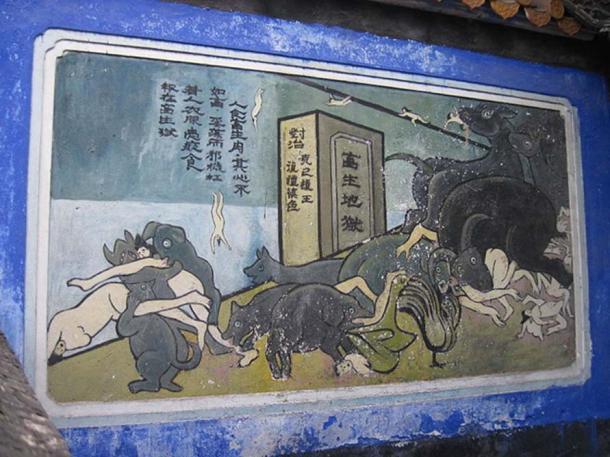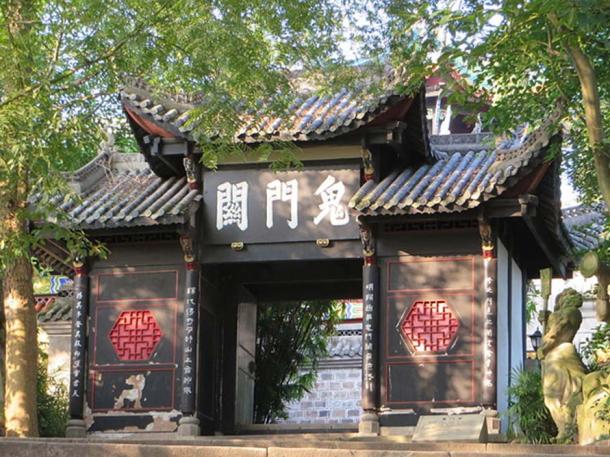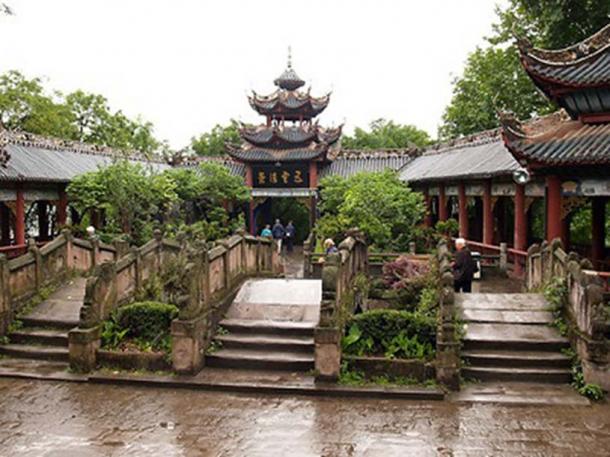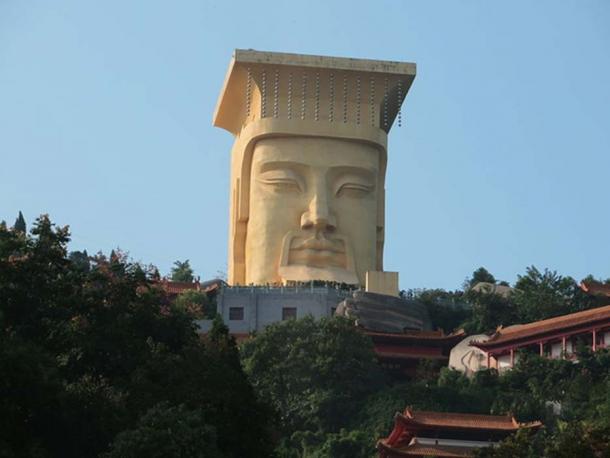
Fengdu Ghost City: Testing Your Soul in the Domain of the Chinese King of Hell
Numerous shrines, temples and monasteries pepper Fengdu Ghost City. But all of them are dedicated to the afterlife. Legends link the site to the King of the Underworld. Would you dare to enter his domain?
Fengdu Ghost City is a site located on the Ming Mountain, in Fendu County, in the southwestern Chinese municipality of Chongqing. Due to its location, Fengdu Ghost city has become a popular tourist attraction amongst travelers on cruises traversing the length of the Yangtze River. In 1994, the construction of the Three Gorges Dam began, causing a rise in the water level of the Yangtze River, and turning Fengdu Ghost City into an island.

The Home Viewing Pavilion (望乡台), a pavilion that every soul passes by on the journey to the underworld in Fengdu. (Gisling/CC BY SA 3.0)
Legendary City for a Ghostly King
According to legend, Fengdu gained its reputation as a ghost city during the Eastern Han dynasty. During this period, there lived two individuals named Yin Changsheng and Wang Fangping, both of whom served as officials in the imperial court. One day, the pair decided to quit their jobs, and headed to Ming Mountain, where they practiced self-cultivation in accordance with the teachings of Taoism. As a result of this, the two men succeeded in achieving immortality. During the Tang dynasty, the surnames of these two officials, Yin and Wang, were combined (mistakenly, according to one source) to form ‘Yinwang’, which meant ‘the King of the Underworld’. The claim that the King of Hell lived in Fengdu also began to circulate at that time.
- Ghost Marriages: Love For the Living and the Deceased
- The Sacred Ghost Town of Ani, City of 1001 Churches: Deserted By Man, Destroyed By Nature
- The Living Dead: Chinese Hopping Vampires
Statue of a judge of hell in Fengdu ghost city. (Gisling/CC BY SA 3.0)
Three Tests to Pass into the Afterlife
Additionally, during the Tang dynasty, a huge temple depicting the afterlife was erected. These scenes, which included dioramas and statues, were meant to convey the message that the good would be treated well, whilst the wicked would be tortured and punished in Hell. Other structures were added by succeeding dynasties. The best known of these are a trio of attractions – the Naihe Bridge, the Tianzi Palace, and the Guimen Gate, where there are three major tests. According to Chinese traditional belief, a soul would need to pass these tests before reaching the afterlife.
The Naihe Bridge (known also as the Bridge of Helplessness) was built during the Ming dynasty, and is located halfway on Ming Mountain. According to traditional Chinese belief, this was the bridge that connects the mortal realm to the Underworld. The bridge is used to test people, and there are various protocols for crossing it, depending on a person’s age, sex and marital status. In any case, there are square pools of water below the bridge. Whilst the virtuous are said to be able to cross the bridge safely, those who have led evil lives are believed to be pushed by demons into the water below.

Mural in Fengdu Ghost City showing evil people falling to the underworld and being eaten by monsters. (CC BY 3.0)
The second major test takes place at the Guimen Gate (also known as the Gates of Hell). In some sources, it is the third major test that takes place here, but most consider this the second. The Chinese believe that it is here that the souls of the dead report to the King of Hell for judgment. At this place, the dead are issued a road pass which would serve as evidence so that they may register in the afterlife. At Fengdu Ghost City, the front of the Guimen Gate is decorated with eighteen sculptures of ferocious demons.

Guimen Gate (also known as the Gates of Hell) Fengdu Ghost City, Chongqing, China. (Jpbowen/CC BY SA 4.0)
The last major test is carried out in the Tianzi Palace (known also as the Emperor’s Palace). This structure was originally built during the Western Jin dynasty. The current one, however, dates to the early part of the Qing dynasty. The test here is for a person to stand on a large stone (located in front of the gate) on one leg. Whilst a good person can do this easily, an evil one apparently cannot – leading them to be punished in the afterlife.
- Ghost Beliefs in Polynesia: When Spirits Return and Possess
- Female Phantoms of Stirling Castle: Ghostly Encounters with a Handmaiden and Her Queen
- Unfolding the Golden Nuggets of Early Chinese Paper Folding and the Art of Origami

Tianzi Palace, Fengdu, China. (Visit China Blog)
Facing the Ghost King
Apart from these three attractions, there are a number of other interesting sights at the Fengdu Ghost City for visitors to city. For instance, there is a giant face in the hill known as ‘The Ghost King’, which is said to hold the Guinness World Record title for being the largest sculpture carved on a rock. Additionally, there is the Home Viewing Pavilion, which was built in 1985. It is said to allow the dead to look towards their homes and loved ones one last time before undertaking their journey in the afterlife.

Large statue known as ‘The Ghost King’ on the hilltop at Fengdu Ghost City, Chongqing, China. (Jpbowen/CC BY SA 4.0)
Top image: Naughty ghost statue, in the ghost city Fengdu. (mygola.com)
By: Wu Mingren
References
China Discovery, 2017. Fengdu Ghost City – Culture of Afterlife in China. [Online]
Available at: http://www.chinadiscovery.com/yangtze-cruises/fengdu.html
China Highlights, 2017. Fengdu Ghost City. [Online]
Available at: https://www.chinahighlights.com/chongqing/attraction/fengdu-ghost-city.htm
foofoonoo, 2017. Fengdu Ghost City. [Online]
Available at: https://www.atlasobscura.com/places/fengdhu-ghost-city
Smithfield, B., 2016. The Fengdu Ghost City in Chongqing Municipality in China. [Online]
Available at: https://m.thevintagenews.com/2016/10/12/the-fengdu-ghost-city-in-chongqing-municipality-in-china/
Travel China Guide, 2017. Fengdu Ghost City. [Online]
Available at: https://www.travelchinaguide.com/river/yangtze_attraction/fengdughostcity.htm
















